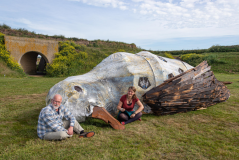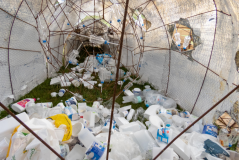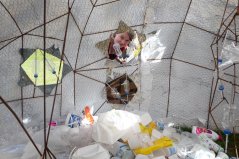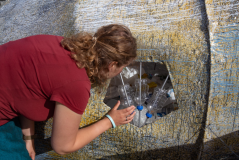
News
Famous Fulmar
Recently, on the Dutch Wadden Sea island Texel, a project has started under the title of ‘SEA Texel’. SEA stands for ‘Science Encounters Art’. On different spots around the island ten different art objects are situated for which artists found their inspiration after discussions with marine scientist of the Texel based Netherlands Institute for Sea Research (NIOZ).
Plastic virus
NIOZ scientist Corina Brussaard has specialised in marine viruses, and considers plastic litter in the sea as a malicious virus that may kill wildlife. She inspired artist Maria Koijck to the construction of a huge, 8 meter long dead northern fulmar containing the plastic virus. Gradually the Fulmar has acquired fame as a symbol illustrating the problems of plastic litter in our oceans.
Realistic image
This large fulmar is situated at ‘De Schans’ a historical fortification of ‘Natuurmonumenten’ (Dutch Society for Nature Conservation) along the Wadden Sea dyke close to the village of Oudeschild on Texel. In preparation, artist Maria Koijck visited the labs of Wageningen Marine Research in Den Helder, to use one of our study birds for the design of her art object. Maria has done a great job, the complicated fulmar bill has been immortalized in a metal construction. The body is a construction of metal bars, covered with a plastic skin. Wings and legs are made from wooden litter.
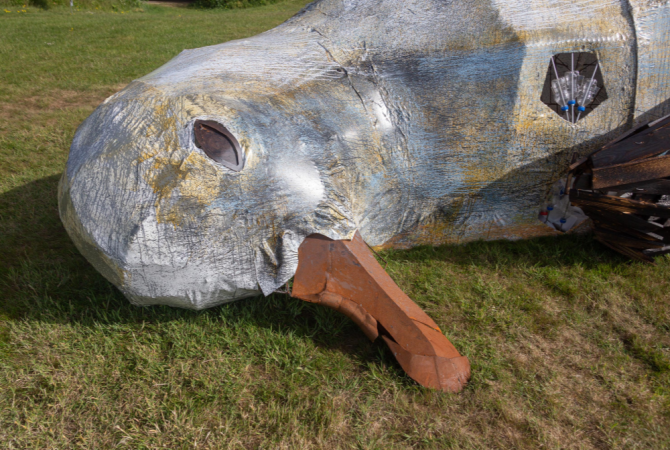
Litter bin
The big size of this piece of art only becomes evident when people are seen next to it. The bird is hollow, and has openings in the skin. At the opening of the art exhibition, schoolkids from the island could throw plastic waste into the bird. It makes an appropriate image: the Northern Fulmar as the litter bin of the North Sea.
